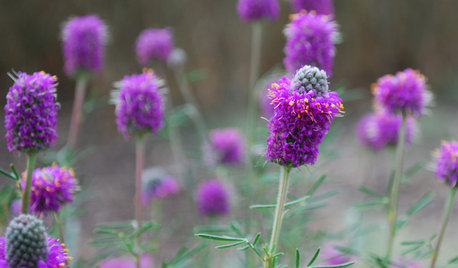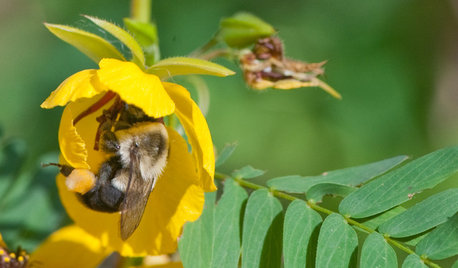Nitrogen Fixation by Legumes
jimster
15 years ago
Related Stories

GARDENING GUIDES5 Prairie Wildflowers That Can Heal Your Soil
Get free, organic soil fertilizer with nitrogen-pumping plants that draw pollinators too
Full Story
GARDENING FOR BUTTERFLIESGreat Design Plant: Purple Prairie Clover
Bees and butterflies and color, oh my! This cheery native perennial will energize your landscape
Full Story
MATERIALSMesquite: The Brawny Beauty for All Over the Home
Denser than other hardwoods and sporting beautiful coloration, mesquite makes a fine material for flooring, countertops, furniture and more
Full Story
GARDENING GUIDESGreat Design Plant: Chamaecrista Fasciculata Brightens City Boulevards
Plant partridge pea in eastern U.S. gardens for its bright yellow flowers, lacy foliage and drought tolerance
Full Story
GARDENING GUIDES15 Ideas to Try in Your Garden This Year
These gardening stories were tops among Houzz readers. Which ideas might you try this year?
Full Story
EDIBLE GARDENSGarden BFFs? Why Your Vegetables Are Begging for Companion Plants
Foster friendships among plants for protection from pests, pollination support and color camaraderie
Full Story
EDIBLE GARDENSNatural Ways to Get Rid of Weeds in Your Garden
Use these techniques to help prevent the spread of weeds and to learn about your soil
Full Story
MOST POPULARHow to Start a Cool-Season Vegetable Garden
Late summer and late winter are good times to plan and plant cool-season crops like salad greens, spinach, beets, carrots and peas
Full Story
EDIBLE GARDENSSummer Crops: How to Grow Watermelons
You might not need as much space as you think to get this summer mainstay to spring up in your garden
Full Story
FARM YOUR YARD9 Ways to Change Up Your Vegetable Garden for the Coming Season
Try something new for edible plantings that are more productive than ever
Full Story





sudzy
sudzy
Related Professionals
Brentwood Landscape Architects & Landscape Designers · Billerica Landscape Contractors · Edmond Landscape Contractors · Amesbury Landscape Contractors · Azalea Park Landscape Contractors · Franklin Landscape Contractors · Louisville Landscape Contractors · Raleigh Landscape Contractors · Rockwall Landscape Contractors · Roseville Landscape Contractors · Wethersfield Landscape Contractors · Hueytown Landscape Contractors · Chicago Decks, Patios & Outdoor Enclosures · Commerce City Decks, Patios & Outdoor Enclosures · Dearborn Decks, Patios & Outdoor Enclosureschaman
jimsterOriginal Author
rodger
sudzy
jimsterOriginal Author
rodger
sudzy
jimsterOriginal Author
zeedman Zone 5 Wisconsin
rodger
sudzy
chaman
zeedman Zone 5 Wisconsin
jimsterOriginal Author